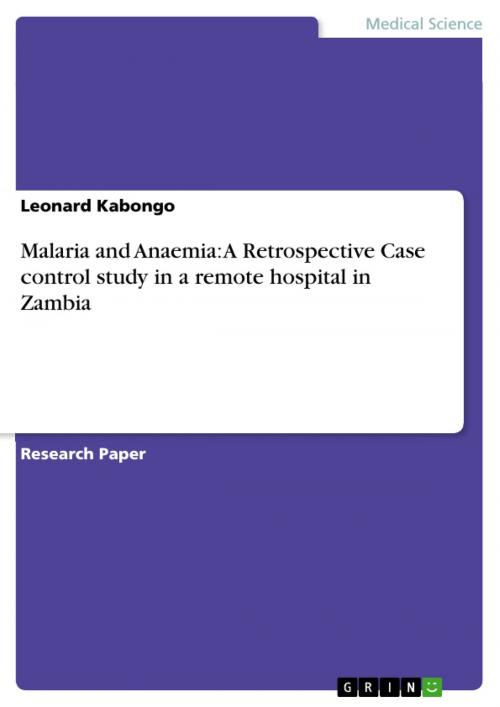Malaria and Anaemia: A Retrospective Case control study in a remote hospital in Zambia
Nonfiction, Health & Well Being, Medical, Reference, Public Health| Author: | Leonard Kabongo | ISBN: | 9783640911196 |
| Publisher: | GRIN Verlag | Publication: | May 9, 2011 |
| Imprint: | GRIN Verlag | Language: | English |
| Author: | Leonard Kabongo |
| ISBN: | 9783640911196 |
| Publisher: | GRIN Verlag |
| Publication: | May 9, 2011 |
| Imprint: | GRIN Verlag |
| Language: | English |
Research Paper (postgraduate) from the year 2010 in the subject Medicine - Public Health, grade: B, Atlantic International University (School of Human and Social studies), course: Fundementals of Epidemiology, language: English, abstract: Malaria is an endemic disease in Zambia and it's a major public health problem in Africa, especially in the Tropics and developing countries. Malaria continues to place an unacceptable burden on health and economic development in over 100 countries across the world, with malaria mortality exceeding one million annually, primarily in children under five(3). Efforts have been put in place over the years to reduce the high incidence and mortality rate due to Malaria. From pharmaceutical options reviews to environmental actions, governments and their stakeholders through the Ministries of Health in various countries affected by the endemic, have worked to initiate policies for a massive and effective disease control. According to WHO, about 109 countries in the world are considered endemic for malaria,45 countries within the African continent.3,3 billion people were estimated to be at risk of malaria in 2006.Of this total,2,1 billion were at low risk(<1 reported case per 1000 population),97% were living in regions other than Africa. The 1, 2 billion at high risk (?1 case per 1000 population) were living mostly in the WHO African (49%) and South-East Asia regions (37%)(18).In the same report, there was an estimated death of 881,000(610,000-1,212,000) due to malaria in 2006, of which 91%were in Africa and 85% were of children under 5 years of age. (Table 1).
Research Paper (postgraduate) from the year 2010 in the subject Medicine - Public Health, grade: B, Atlantic International University (School of Human and Social studies), course: Fundementals of Epidemiology, language: English, abstract: Malaria is an endemic disease in Zambia and it's a major public health problem in Africa, especially in the Tropics and developing countries. Malaria continues to place an unacceptable burden on health and economic development in over 100 countries across the world, with malaria mortality exceeding one million annually, primarily in children under five(3). Efforts have been put in place over the years to reduce the high incidence and mortality rate due to Malaria. From pharmaceutical options reviews to environmental actions, governments and their stakeholders through the Ministries of Health in various countries affected by the endemic, have worked to initiate policies for a massive and effective disease control. According to WHO, about 109 countries in the world are considered endemic for malaria,45 countries within the African continent.3,3 billion people were estimated to be at risk of malaria in 2006.Of this total,2,1 billion were at low risk(<1 reported case per 1000 population),97% were living in regions other than Africa. The 1, 2 billion at high risk (?1 case per 1000 population) were living mostly in the WHO African (49%) and South-East Asia regions (37%)(18).In the same report, there was an estimated death of 881,000(610,000-1,212,000) due to malaria in 2006, of which 91%were in Africa and 85% were of children under 5 years of age. (Table 1).















